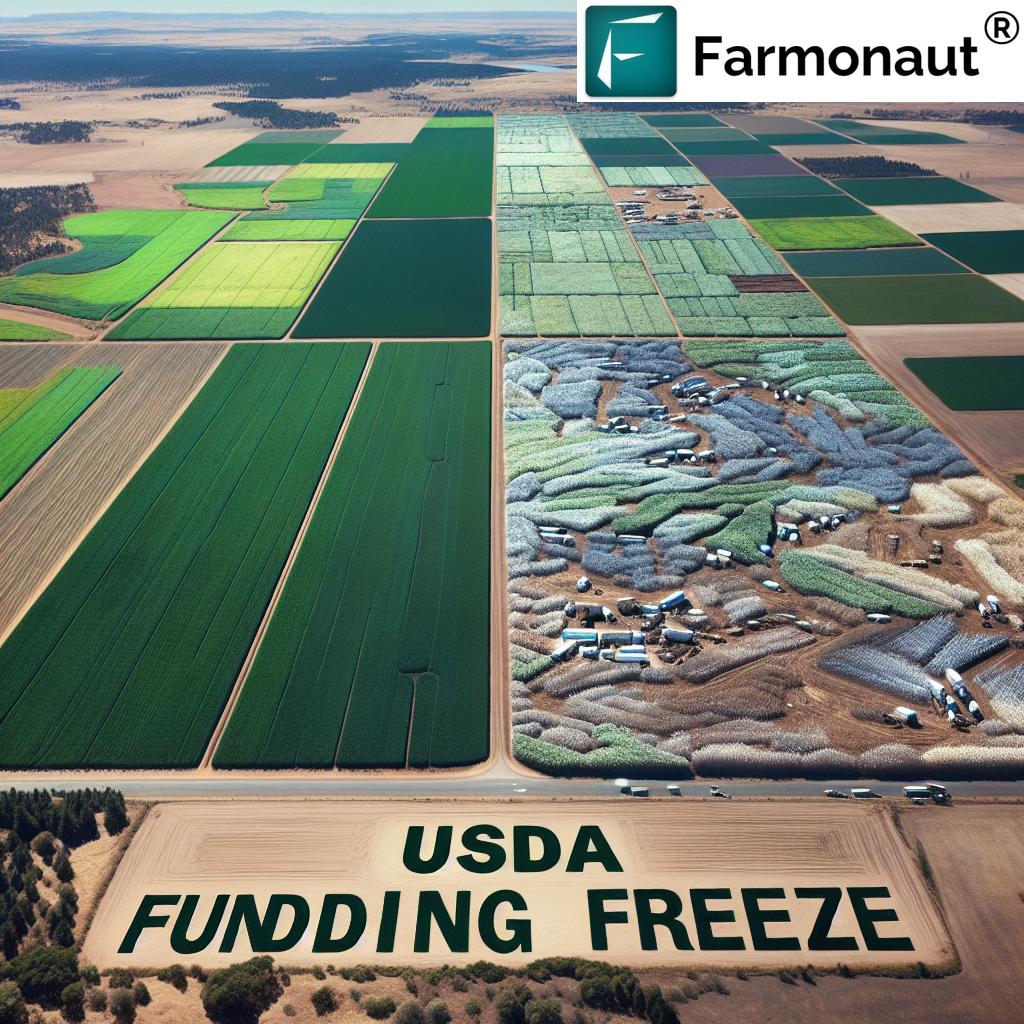Brahman Cow, Red & Mini Brahman for Sale & Price Guide (2025): Breed Adaptability & Value for Sustainable Farming
“Brahman cows can tolerate temperatures up to 45°C, making them ideal for resilient, sustainable farming in 2025.”
Introduction: Brahman Cattle in Modern Agriculture
In the rapidly evolving landscape of agriculture and livestock in 2025, the Brahman cow family stands as an essential asset for farmers and ranchers alike. Originating from the hardy Indian Zebu cattle, the Brahman breed has been extensively developed and refined in countries like the United States, Australia, and Brazil. Its unique resilience, adaptability, and superior economic value make it the breed of choice for both smallholder and large-scale farming ventures, especially in regions facing significant climate challenges.
Brahman, red Brahman cow, and mini Brahman cow are highly prized not just for their striking appearance but also for their capacity to drive sustainable, resilient farming values into 2026 and beyond. The expanding market for brahman for sale, robust brahman cow price, and tech-driven livestock management underscore the pivotal role Brahman cattle play in modern agriculture.
Origin and Development of the Brahman Breed
The brahman breed is a result of centuries-long selection and breeding, beginning with the import of Indian Zebu cattle—noted for their exceptional heat and insect resistance—into subtropical and tropical climates worldwide. In the United States, livestock experts extensively developed and refined this breed by optimizing for higher weight gain rates, manageable temperaments, and adaptability to a range of agricultural systems.
By the early 21st century, brahman cattle had evolved into multiple distinctive varieties, including the red Brahman cow and mini Brahman cow, each catering to specialized market segments and regional demands. These breeds quickly gained reputation for superior traits and become foundational to many modern livestock operations.
“Mini Brahman breeds require 30% less feed, supporting resource-efficient adaptation for future farm technology models.”
Key Characteristics and Varieties of Brahman Cattle in 2025
The brahman breed features key qualities that have only grown in significance for sustainable farming in today’s climate-vulnerable world. These include extraordinary heat tolerance, insect and disease resistance, genetic adaptability, efficient feed conversion, and strong maternal instincts.
The red Brahman cow and mini Brahman cow are outstanding representatives of how genetic innovation continues to yield new solutions for modern agricultural challenges.
Red Brahman Cow: Distinction and Adaptability
- Visually, the red Brahman cow is distinguished by its striking reddish coat.
- Developed through selective breeding focused on both their rich color and inherent vigor.
- Excellent heat tolerance makes these cattle coveted for regions experiencing increasing temperatures due to climate change.
- Their resistance to insects and diseases is particularly beneficial for farms in tropical and subtropical regions.
- This breed is highly valued by both commercial beef operations and breeding stock investors.
- Red Brahman cows have become a symbol of innovation for farmers looking to future-proof their herds.
Farmers and ranchers seeking resilient herds in challenging environments increasingly turn to the red Brahman breed, not only for its robustness but also for its genetic diversity.
Mini Brahman Cow: The Ideal Compact Breed
- Mini Brahman cattle cater to smaller-scale farms and mixed-operation ranches.
- These animals maintain the hallmark traits of full-size Brahman cows: hardiness, maternal instincts, and efficient feed conversion.
- Their reduced size (typically 40-60% of conventional Brahman cows) makes them easier to manage and less resource-intensive in settings with limited space or resources.
- Mini Brahman breed is particularly well-matched to intensive farming systems focused on sustainability and regenerative agriculture.
Mini Brahman cattle are ideal for urban farming, educational programs, and smallholder farms where space, feed, and labor need to be optimized without sacrificing quality or productivity.
Comparative Breed Adaptability & Value Table (2025)
For a quick snapshot, our Comparative Breed Adaptability & Value Table presents estimated, actionable data for each Brahman variety, empowering buyers, breeders, and forward-thinking farming professionals to make informed decisions.
| Breed Type | Adaptability to Climate | Feed Efficiency | Average Price (Estimated 2025) | Disease Resistance | Size/Weight Range | Sustainability Contribution |
|---|---|---|---|---|---|---|
| Brahman Cow | Extreme (25-45°C; withstands drought and humidity) | High; adapts to varying forage | $2,500 – $5,000 (breeding stock) | Very High | 400–800 kg | Major, supports low-input and organic farms |
| Red Brahman Cow | Extreme (30-45°C; exceptional under heat stress) | Very High; thrives on low-quality feed | $3,000 – $6,500 (premium breeding/calves) | Exceptional | 420–820 kg | Major, key for resilient, climate-smart operations |
| Mini Brahman Cow | High (20-40°C; versatile urban/rural use) | Excellent; 30% less feed required | $2,000 – $4,000 (breeding) | Very High | 250–450 kg | Outstanding for small farms, education, and low-resource models |
*All prices are estimated ranges for 2025. Actual market prices may vary by region, pedigree, genetics, and intended use.
Resilience and Adaptability: Why Brahman Remains Vital
- Ultimate Resilience: The primary allure of the brahman cow is its capacity to withstand extremes in climate, from searing tropical heat to periods of forage scarcity.
- Disease and Parasite Resistance: Brahman breeds demonstrate considerably higher resistance to insects, parasites, and endemic diseases—a gamechanger as weather variability pushes vectors to new regions.
- Efficient Resource Utilization: These cattle can convert low-quality vegetation into valuable beef and breeding output with minimal veterinary intervention or supplemental inputs.
- Versatility: Their ability to thrive in diverse systems—from organic, regenerative farms to intensive, mixed-use operations—makes them the first choice in future-facing farming strategies.
As temperatures rise and weather patterns become less predictable in 2025 and beyond, having a Brahman-based herd is synonymous with long-term stability and sustainability.
Brahman Cow Price, Market Demand & Investment Guide: 2025
How much does a Brahman cow cost? Why do premium buyers look for “Brahman for sale” from reliable sources? Let’s dissect the economics and market forces.
- Brahman cow price: Dominated by both domestic consumption and international demand, prices consistently remain robust. In 2025, you’ll find mature Brahman breeders and high-quality calves fetching premium prices, especially those with proven genetics for heat tolerance, disease resistance, and reproductive performance.
- Red Brahman cow price: Particularly in tropical regions, pure lines or calves from high-performing sires often exceed average price points due to their superior adaptability and visual appeal.
- Mini Brahman cow price: These smaller animals, ideal for space-limited and mixed farms, attract a strong following among sustainable and tech-savvy farm owners.
- Market demand: The search for “brahman for sale” is driven by farmers looking to optimize resources, reduce disease losses, and build climate-resilient herds—making Brahman genetics a reliable investment in any agricultural operation.
Factors affecting price:
- Age and health of the animal
- Pedigree and documentation of genetics
- Intended use (beef, breeding, show, or commercial operations)
- Premiums for show-quality or award-winning bloodlines
Investing in Brahman cattle is about more than acquiring livestock. It’s about integrating proven genetics and future-facing sustainability into your farming operation.
Sustainable Farming Systems: Brahman Cows’ Role in Modern Agriculture
Sustainability and climate resilience are central themes in 2025 agricultural planning. Brahman cattle play a unique role in these systems—thanks to both their individual traits and their widespread impact on farm-level resource management.
Why Brahman Breeds Advance Sustainable Farming
- Low-intensity input requirement: Brahmans thrive on lower-quality forage, reducing reliance on expensive feeds and enabling organic production models.
- Environmental impact: Reduced need for veterinary care, antibiotics, and supplemental resources cuts both costs and greenhouse gas footprint.
- Genetic crossbreeding: Using Brahman genetics to enhance local cattle breeds’ heat and disease tolerance supports long-term food security in vulnerable climates.
- Soil and land stewardship: Grazing systems utilizing Brahman herds can enhance soil health, promote pasture diversity, and reduce land degradation.
Looking to quantify your farm’s carbon footprint? Discover how Farmonaut carbon footprinting tools help agricultural professionals track and manage sustainability outcomes using real satellite data.
In regions across the United States, Australia, and Brazil, government and private sector initiatives now recommend Brahman genetics for both high-production and regenerative farms—ensuring that robust, climate-adaptive cattle remain at the forefront of the agricultural value chain.
Access Farmonaut’s advanced tools for real-time agricultural monitoring, sustainability tracking, and cattle management with the Farmonaut App:
Want to ensure your Brahman breeding operations are fully transparent and verifiable? Learn how Farmonaut’s blockchain-based traceability solutions bring trust, quality control, and security to livestock and beef markets worldwide.
Technology, Innovation, and Future Outlook
By 2026 and beyond, digital technology will become inseparable from successful livestock and agricultural operations. For Brahman cattle breeders, sellers, and buyers seeking that edge, the adoption of advanced, affordable technology platforms is key to maximized value.
- Satellite Data & Monitoring: Satellite-enabled systems allow for real-time tracking of pasture health, availability of forage, and early disease identification, protecting herd investments and optimizing land use across diverse regions.
- AI & Machine Learning: Predictive analytics tailored for cattle health, breeding cycles, and resource management enable smarter, more sustainable herding.
- Blockchain Traceability: Secure traceability creates consumer-confidence in beef quality and reduces risk of fraud—crucial for international commerce and export markets focusing on premium Brahman genetics.
Discover Farmonaut’s API for integrating satellite and livestock monitoring into your own digital infrastructure (API Developer Docs), and boost efficiency in any cattle operation.
Handle logistics and resource operations across large farm or ranch areas? Farmonaut’s fleet management module optimizes machinery, vehicles, and even staff allocation with data-driven insights for increased efficiency and cost savings.
Farmonaut: Driving Tech Solutions for Sustainable Livestock Management
We, at Farmonaut, bring the power of satellite technology, artificial intelligence, and blockchain traceability directly into the hands of farmers, agri-businesses, and ranchers. Our solutions support everything from real-time pasture monitoring to supply chain transparency and environmental impact analytics.
- Affordable Satellite Monitoring: We democratize access to satellite-driven monitoring tools—making real-time, location-specific crop, pasture, and infrastructure insights available to all, no matter the operation’s scale or location.
- AI-Driven Advisory: Our Jeevn AI system delivers personalized strategies and weather-driven alerts for your production cycle, herd management, and defense against risks—driving efficiency across the board.
- Blockchain-Based Traceability: Our platform increases supply chain transparency and trust, making your brahman cow, red brahman cow, and mini brahman cow operations easily auditable and market-ready.
- Fleet & Resource Management: Manage everything from farm vehicles to irrigation equipment with intuitive, cloud-based interfaces. Reduce operational expenses, stop resource leaks, and maximize yield.
- Environmental Impact Tracking: Stay ahead of regulatory requirements and global sustainability benchmarks with our carbon footprint and biodiversity monitoring modules.
Learn more about our crop loan and insurance satellite verification services—helping financial access and reducing fraud risk in rural economies.
Whether you’re scaling up your brahman cow herd or embracing sustainable innovation on a small farm, our mission is to maximize agricultural profit, efficiency, and sustainability for everyone.
Did you know? For ranchers and agri-enterprises, Farmonaut’s large-scale farm management platform delivers satellite-powered mapping and field-level monitoring, perfect for beef production and Brahman genetics management at scale!
Frequently Asked Questions (FAQ): Brahman Cow, Red Brahman & Mini Brahman in 2025-2026
-
Q: Why is the Brahman cow considered so valuable for future farming?
A: Its heat tolerance, disease resistance, and feed efficiency, combined with adaptability to varied climatic regions, make it an essential breed for resilience and sustainability. -
Q: What’s the main difference between Brahman, red Brahman cow, and mini Brahman cow?
A: Red Brahman cows are distinguished by their striking reddish coat and enhanced heat resilience. Mini Brahmans are bred for their compact size and feed/resource efficiency, ideal for small or mixed farms. -
Q: How much does a Brahman cow cost in 2025?
A: High-quality breeding Brahmans fetch between $2,500 and $5,000, while premium red Brahmans and mini Brahmans can range up to $6,500, depending on genetics, age, and purpose. -
Q: Are Brahman cows suitable for organic and regenerative farming systems?
A: Absolutely! Their low-input, hardy nature, and resistance to disease make them exceptionally well suited to modern sustainable and regenerative agriculture. -
Q: How do digital technologies support Brahman cattle management today?
A: Solutions like Farmonaut’s platform enable real-time monitoring, predictive AI, blockchain traceability, and carbon tracking, maximizing herd efficiency and positive environmental outcomes. -
Q: Where are Brahman cows most valued and why?
A: Particularly in the United States, Australia, and Brazil—regions experiencing high temperature volatility—due to their resilience, beef productivity, and breeding capacity. -
Q: Can Brahman genetics improve other breeds?
A: Yes, extensive crossbreeding programs use Brahman traits to confer heat and disease tolerance in local livestock, boosting herd adaptability and future food security.

Conclusion: The Essential Role of Brahman Cows in the Evolving Agricultural Landscape (2025 & Beyond)
In 2025 and looking forward, Brahman cow, red Brahman cow, and mini Brahman cow continue to secure their status as vital assets in modern, sustainable agricultural systems. Their blend of resilience, adaptability, quality, and economic value places them at the center of strategies for overcoming climate and resource challenges, no matter the region—from tropical Brazil to subtropical Australia to the American South.
For buyers and breeders looking for Brahman for sale, focusing on premium genetics, show-quality traits, and robust management technologies is the path to maximizing both profit and sustainability. As agriculture embraces advanced tools and data-driven innovations, Brahman cattle remain not just relevant but indispensable—delivering unmatched productivity, security, and market value for the farms of tomorrow.
We, at Farmonaut, are committed to ensuring you have the best technology at your disposal—whether you manage a single Brahman cow, an extensive red Brahman operation, or a tech-forward mini Brahman farm. Unlock the potential of resilient livestock and sustainable agriculture with our tools as your trusted technology partner.
Farmonaut Subscription & API Access
Ready to transform your Brahman cattle and livestock farm for the sustainable, digital future? Farmonaut offers subscription packages and API integration for enterprises, smallholder farmers, businesses, and government institutions worldwide.
Check out Farmonaut’s subscription options below:
Advance your Brahman cow farm’s performance and sustainability:
Try the Farmonaut App today or integrate our API for cross-platform livestock analytics!













